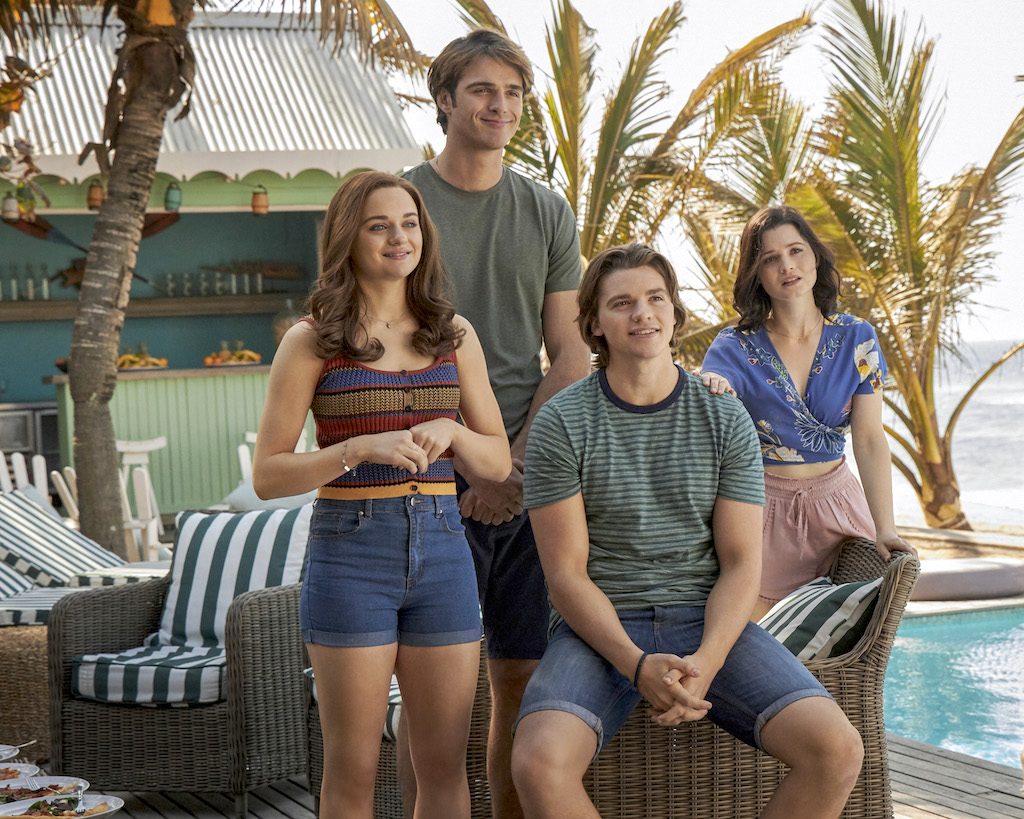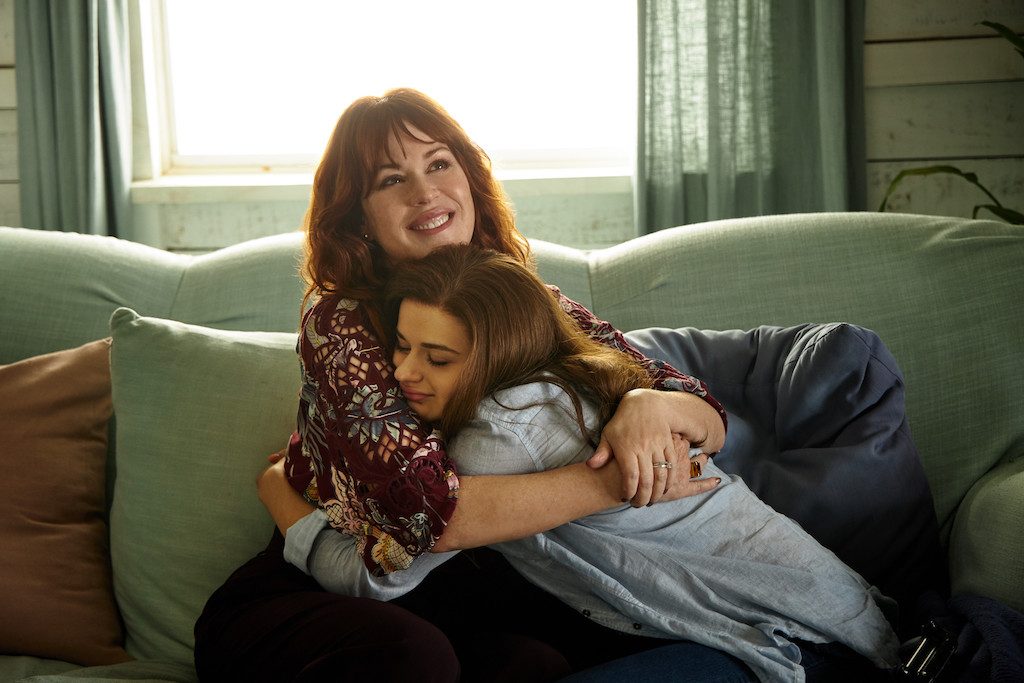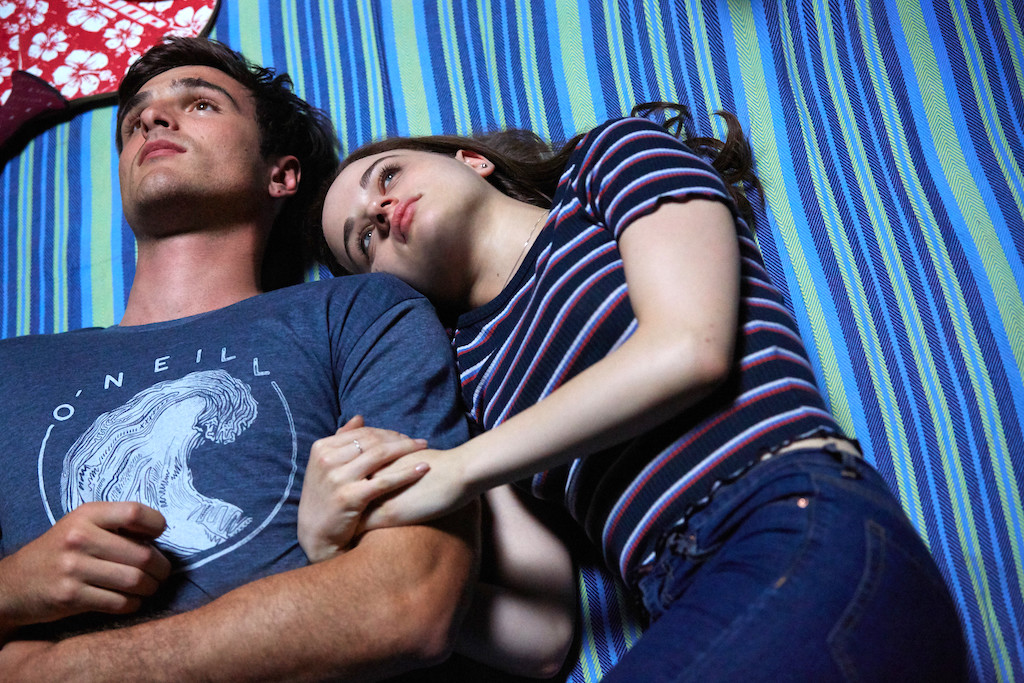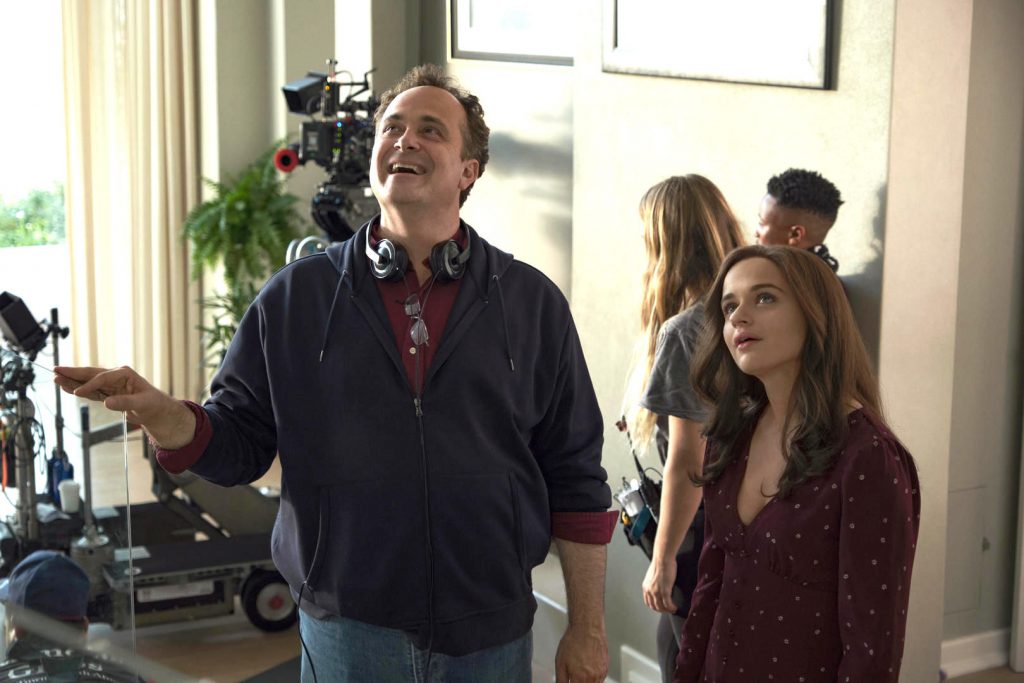There’s a lot of kissing going on in Vince Marcello’s booth. Adapted from the books of Beth Reekles, Kissing Booth has just launched its third and final installation. It centers on Elle Evans (Joey King), her hunky boyfriend Noah Flynn (Jacob Elordi), his brother Lee (Joel Courtney) and heartthrob suitor Marco Peña (Taylor Zakhar Perez). When does Elle have time to think about college or what she really wants in life? She can’t keep basing her life choices on what’s best for other people.
The first two Kissing Booth movies were based on Reekles’ novels. But Kissing Booth 3 didn’t have a third book to base it on. Although there were discussions for sequels post-novel, the challenge was deciding where they would go. “There were different parts of the Elle and Noah universe we could explore,” said Marcello.
The first script was most closely based on the first book while the others were diluted. “My writing partner Jay Arnold and I wrote Kissing Booth 2 & 3 together after reading the second book as one large script with a cliffhanger in between.”
After the first Kissing Booth movie, “I wanted to convey the question of whether it will work out between Elle and Noah. Whatever the outcome, Elle will be better off for creating some distance between her and Noah.” That was the basis for having Elle ride off on a motorcycle after the first Kissing Booth movie.
“When we wrote the sequels we couldn’t betray this initial idea.” Marcello could also pay off and revisit some omitted and underdeveloped storylines from the KB1. When Marcello approached KB3, he “wanted it to feel different both personally and in the storytelling.” This included the musical choices and the playful moments of clinging to childhood contrasted to scenes of letting them go. “I wanted the characters to be richer and more mature, not darker. I didn’t want to lose the Kissing Booth brand.”
In the current climate of endless sequels and spinoffs, it was important that the story parameters of the initial trilogy be set and honored. “The over-riding structure relies on Noah, Lee and Elle coming together, their relationship being challenged, and then realizing that they’re not kids anymore and having to move on.” This three-part composite felt right to the filmmaker.
That said, there is a love for the Kissing Booth franchise so there is always the possibility of further movies being made. “We hope the current trilogy is a satisfying ending for the fans.” If there are sequels (there are no current plans) they would focus on more growth and maturity in Noah, Lee and Elle.
Marcello points to his judicious use of voiceover in all three Kissing Booth movies. Elle internal voice speaks with wisdom about something she’s remembered in the past. “From the beginning, I felt Elle was a more mature person talking about her coming of age. It felt like on older person looking back on their youth.” Coming of age is the shedding of a child-like perspective of the world.
Hollywood has its own agenda with respect to trilogies. The industry makes its decisions based on box office success rather than an organic story need. This poses unique challenges for screenwriters wanting to write three (or more) part series. They need to consider that each script must function as a self-contained story.
The advent of streaming has lowered the threshold to trigger the production of sequels. “Streaming has allowed a more direct approval of sequels to be made,” said Marcello. He also advises that every writer should have the broad strokes of a sequel in their minds while they’re pitching their first film or TV show. “If you can allude to the growth and progression of the story from the source material, you have a greater chance of sequels being greenlit.”
Marcello believes that every story has a sequel. “It’s a function of execution. Every story has a branch from which a sequel can sprout. Trim, water, and set correctly. Stories are endless.”
Character Triad
Elle Evans is ostensibly the main character of Kissing Booth. It’s a story of a girl who’s never been kissed who gets to kiss the boy of her dreams in a kissing booth. Noah and Lee were always in her orbit. “In order for the franchise to become a richer story beyond a girl getting the boy of dreams, I made it an ensemble coming of age story with Elle at the center of it.”
Collectively, it’s about three characters taking their own journey into adulthood, despite the story being told through Elle’s filter. This deliberately leaves less time to explore the relationships between Lee and Noah and Elle and her father.
The key was to give each character a uniqueness and relatability. “Elle was a fun-loving, smart, supportive girl who tried to be all things to everyone.”

Elle Evans (Joey King), Noah Flynn (Jacob Elordi), Lee Flynn (Joel Courtney) & Rachel (Meganne Young). Photo by Marcos Cruz/Netflix
“Lee was the freewheeling man child who is enormously demanding of his best friend’s time. He doesn’t want to see Elle grow up.”
“Noah is the popular bad boy who’s used to having his way. He’s maturing but isn’t exactly sure what he wants.” Marco is a rival suitor to Noah, further adding to Elle’s complications.
Lee is a curious character in that he’s not romantically interested in Elle. Vince Marcello certainly considered the possibility that Elle might come to the realization that Lee, not Noah, is the right guy for her. Tired of repeatedly seeing this trope, he decided against it. This turned out to be the right decision and allowed the film to focus on Lee’s possessiveness.
“When you’re a kid at school and you have a best friend who’s so tied to your identity, you become very connected to them. When that is challenged, you feel in danger. It’s a part of growing up when you realize that they are not an extension of you.” The filmmaker cites his female best friend at school which paralleled Lee’s feelings. “There was that weird period where they had to learn to disconnect to allow partners to come in.” Lee’s challenge was to distance himself from Elle while maintaining their friendship.
Young Adult (YA) films are ostensibly marketed to the 14 – 24 year old demographic. However, they should also reach audiences outside this key demographic. “Younger audiences enjoy it on a different level. The broad strokes are the colors of the thing, the levity, and the stakes for Elle. The politics don’t appeal to that age bracket as much. The emotionality does. They need to have a fun ride and hook into the protagonist.”

Mrs. Flynn (Molly Ringwald) and Elle Evans (Joey King). Photo by Marcos Cruz/ Netflix
Older audiences were attracted to a sense of wonderful bittersweet nostalgia who were brought up on a diet of John Hughes movies. “They will also appreciate the perspective of the parents which are important secondary characters.”
Marcello keeps returning the central premise of KB3 by citing the scene with Elle and Noah’s mother where she counsels Elle who has never stated what she wants to do with her life. “Figure out what gets you excited and do that. Don’t let other people stop you from doing that.”
Elements of a YA Romcom
The key tenets of YA romcoms remain intact over the years. “The essential elements of the genre are budding romance and sexual discovery regardless of the characters. They could be a fifteen year old gay boy, a trans girl, or anyone in between.”
Romcoms must also explore the yearning, dreaming of connecting with someone until they fall in love. “Thread that needle and create a challenging, delightful, humorous, heartbreaking story ultimately followed by success.”
Writers must crack this code of the emerging romantic relationship and weave into the wider story tension which has nothing to do with the romance. “Audiences want to feel engaged, they want to see the characters struggling, and fear that they might not come together.” Harry Potter vanquished the villain as he romanced Hermione. Love is sacrifice and growth. “The romance is not the meat of the story.”
Like many satisfying movies, Elle finds her joy and decides to pursue a career in video game design. “She resolves not withhold her feelings to prevent causing someone pain.“

